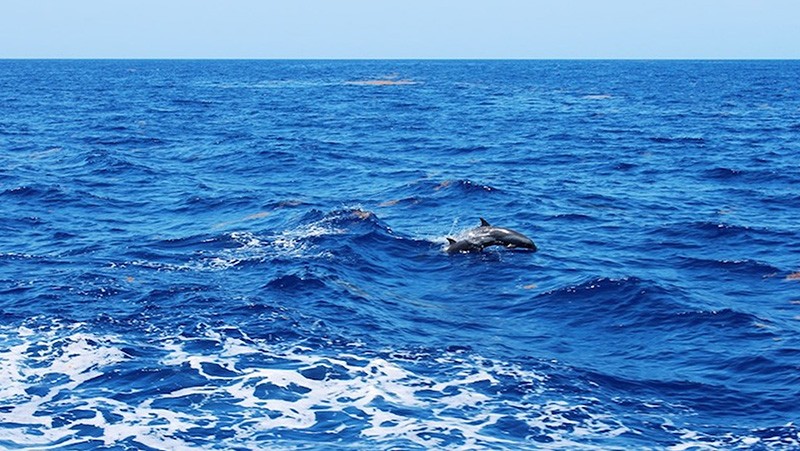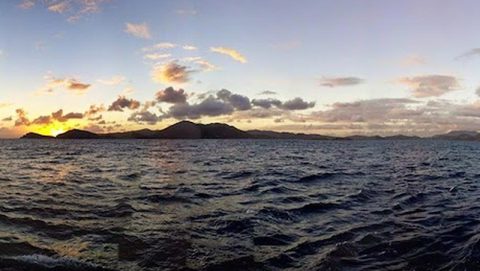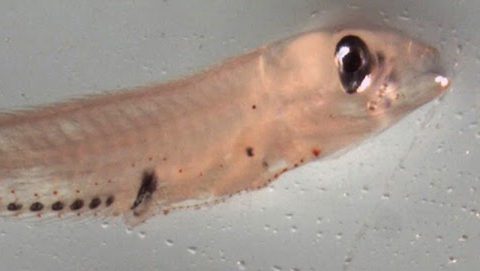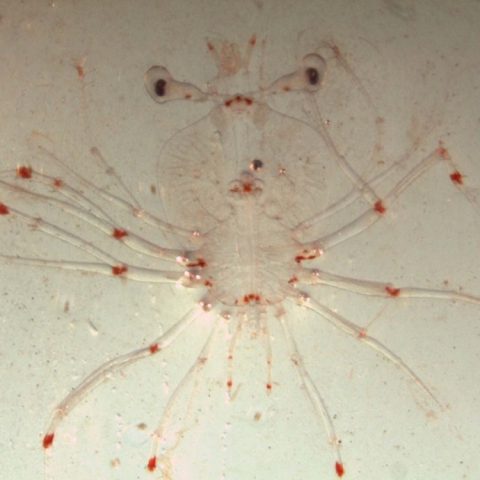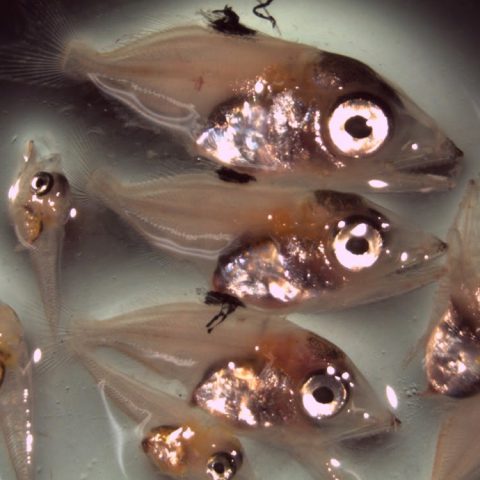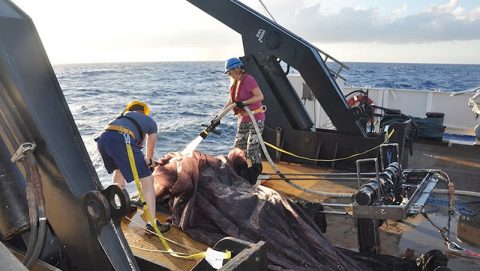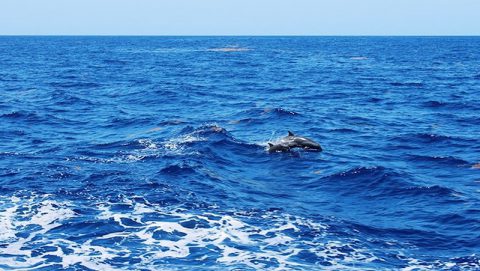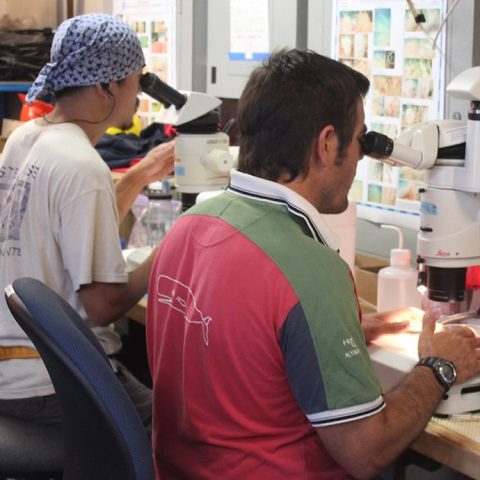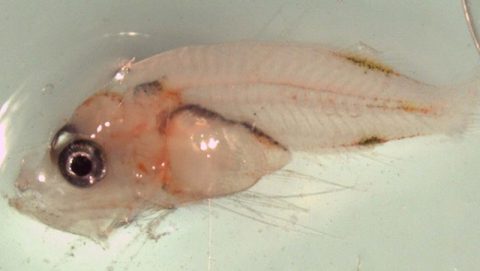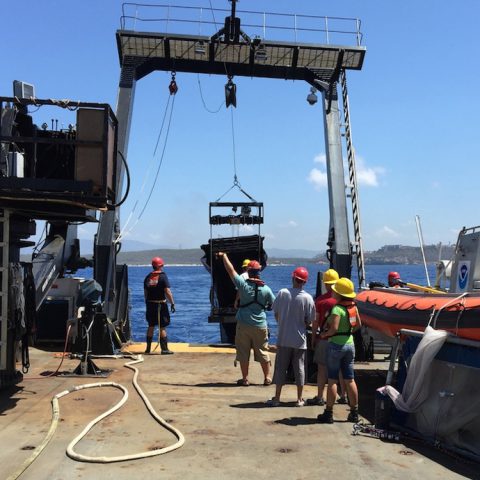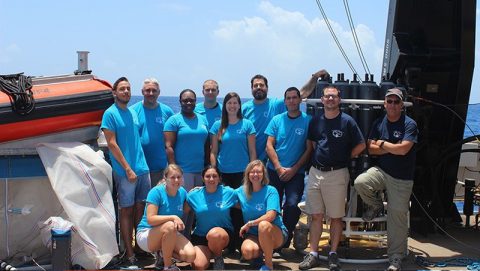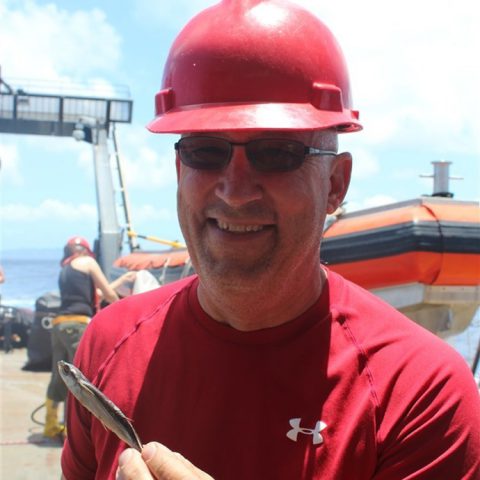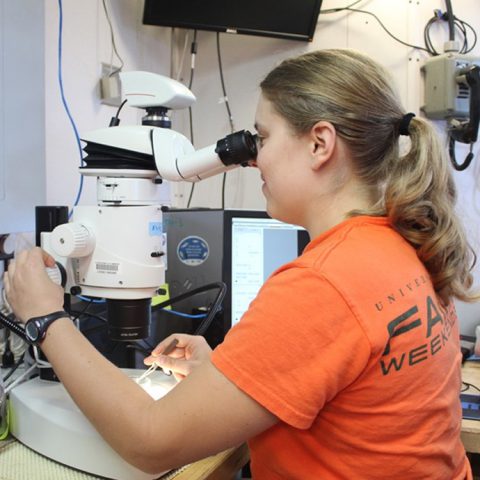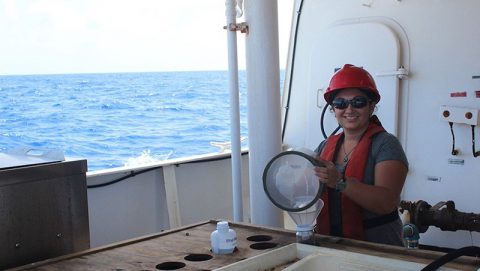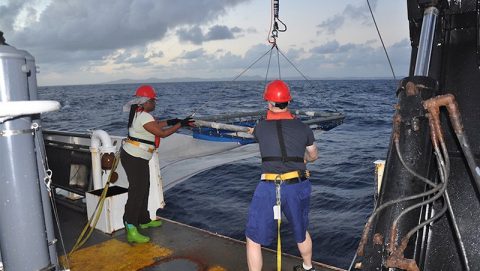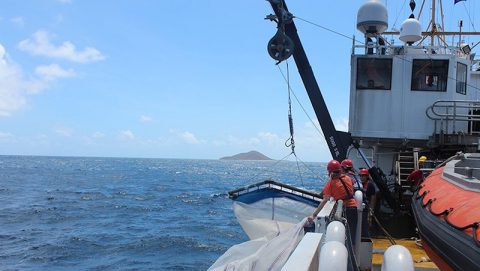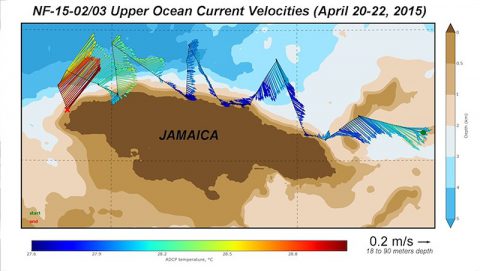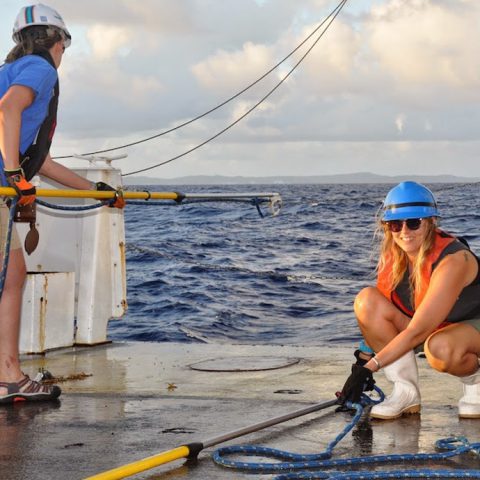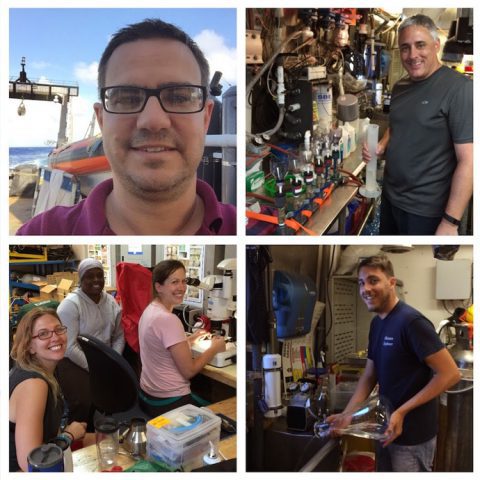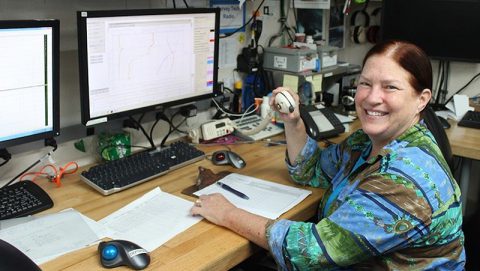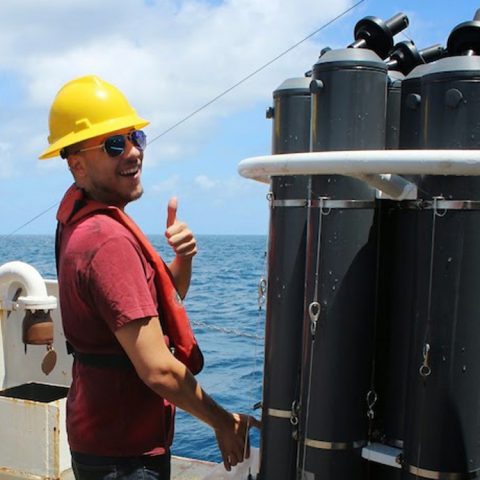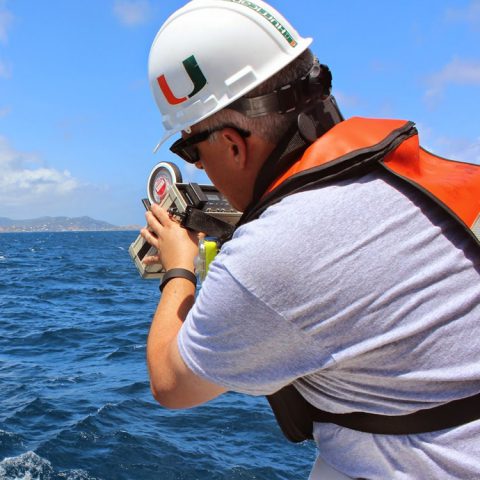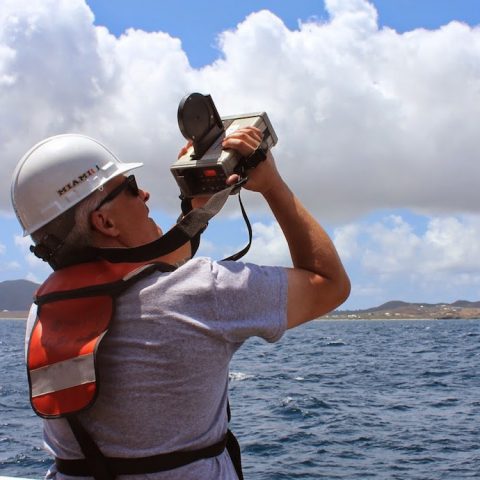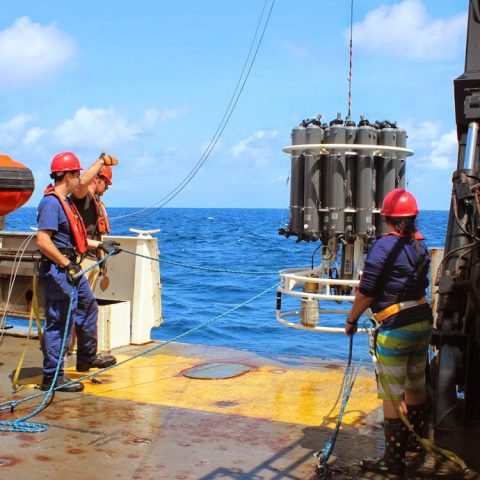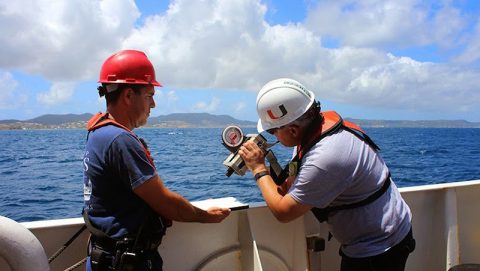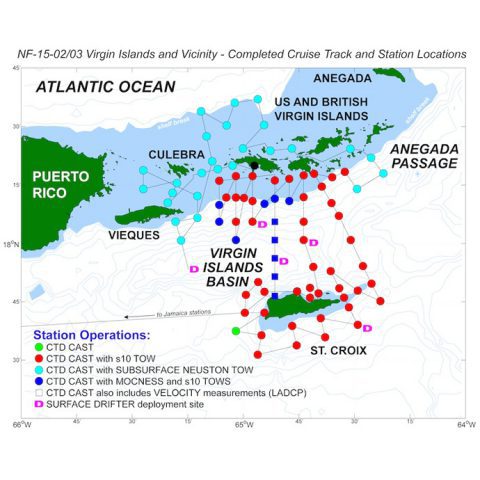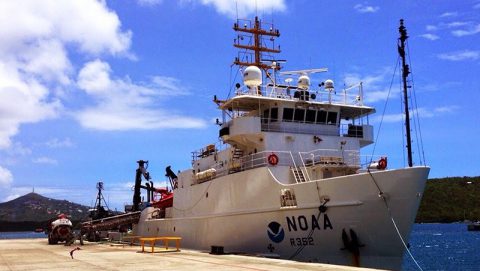AOML partnered with NOAA’s Southeast Fisheries Science Center (SEFSC) to conduct an interdisciplinary research cruise aboard the NOAA Ship Nancy Foster from April 11, 2015 through June 3, 2015. The cruise began in the U.S. Virgin Islands and extended westward across the northern Caribbean to Mexico. Researchers from various institutions conducted a myriad of biological and physical oceanographic surveys during the three month cruise.
Photo credit: NOAA
Image Captions
From Left:
- Image of the island of St. Thomas taken aboard the Nancy Foster. Image credit: NOAA
- Image of a parrotfish larvae under the microscope. Image credit: NOAA
- A lobster larvae. Image credit: NOAA
- Atlantic bluefin tuna larvae collected on the Mesoamerican Barrier Reef. Image Credit: NOAA
- Rinsing down the net after a 100 meter journey. Image credit: NOAA
- A pair of bottlenose dolphins cruising behind the Nancy Foster. Image credit: NOAA
- Aki and Raul working on the microscopes. Image credit: NOAA
- A lionfish larvae. Image credit: NOAA
- The Nancy Foster team deploys the MOCNESS net during Leg 2 in the northern Caribbean. Image credit: NOAA
- Leg 1 crew including: John Lamkin, Sarah Privoznik, Dan Otis, Vanessa Wright, Josue Millan, Trika Gerard, Ryan Smith, Kathryn Doering, Aras Zygas, Alexis Sabine, Grant Rawson, and Jim Europe. Image credit: NOAA
- John Lamkin holds up a flying fish that found its way aboard. Image credit: NOAA
- Kathryn Doering examines larvae under a microscope. Image credit: NOAA
- Alexis Sabine sorts through the contents of the S10 net. Image credit: NOAA
- The crew recovering the S10 net off the back of the Nancy Foster. Image credit: NOAA
- The crew recovers one of the S10 nets that are used to collect the larval fish. Image credit: NOAA
- Plot of the upper ocean currents measured around Jamaica over a two-day period. These vectors are an average of the flow in the upper 18-90 meters of the water column. The strongest currents (almost 1 meter/second, ~2 knots) are observed around the west end of the island. Image credit: NOAA
- University of the Virgin Islands participant Vanessa Wright gets ready to recover the CTD. Image credit: NOAA
- Top: Ryan Smith (NOAA AOML, Chief Sci) on the back deck, Daniel Otis (USF) filtering some water samples. Bottom: Vanessa Wright (UVI), Trika Gerard (NOAA SEFSC), Sarah Privoznik (UM/CIMAS) sorts through the plankton sample and Josue Millan Lugo (UPR) gets the filtering apparatus ready for the next station. Image credit: NOAA
- Libby Johns directing the winch and bridge during the CTD cast. Image credit: NOAA
- Josué Millán from the University of Puerto Rico collects a water sample from a CTD bottle. Image credit: NOAA
- Dan Otis of the University of South Florida measures remote-sensing reflectance with a spectro-radiometer, which measures individual wavelengths of light. Image credit: NOAA
- Dan Otis of the University of South Florida measures remote-sensing reflectance with a spectro-radiometer, which measures individual wavelengths of light. Image credit: NOAA
- CTD package being recovered by NOAA Corps officers Jim Europe, Aras Zygas and Alexis Sabine (DPNR). Image credit: NOAA
- Dan Otis of the University of South Florida measures remote-sensing reflectance with a spectro-radiometer, which measures individual wavelengths of light. Image credit: NOAA
- The track of the Nancy Foster through the U.S. Virgin Islands over the course of Leg 1. Image credit: NOAA
- NOAA Ship Nancy Foster in port, St. Thomas, USVI. Image credit: NOAA
